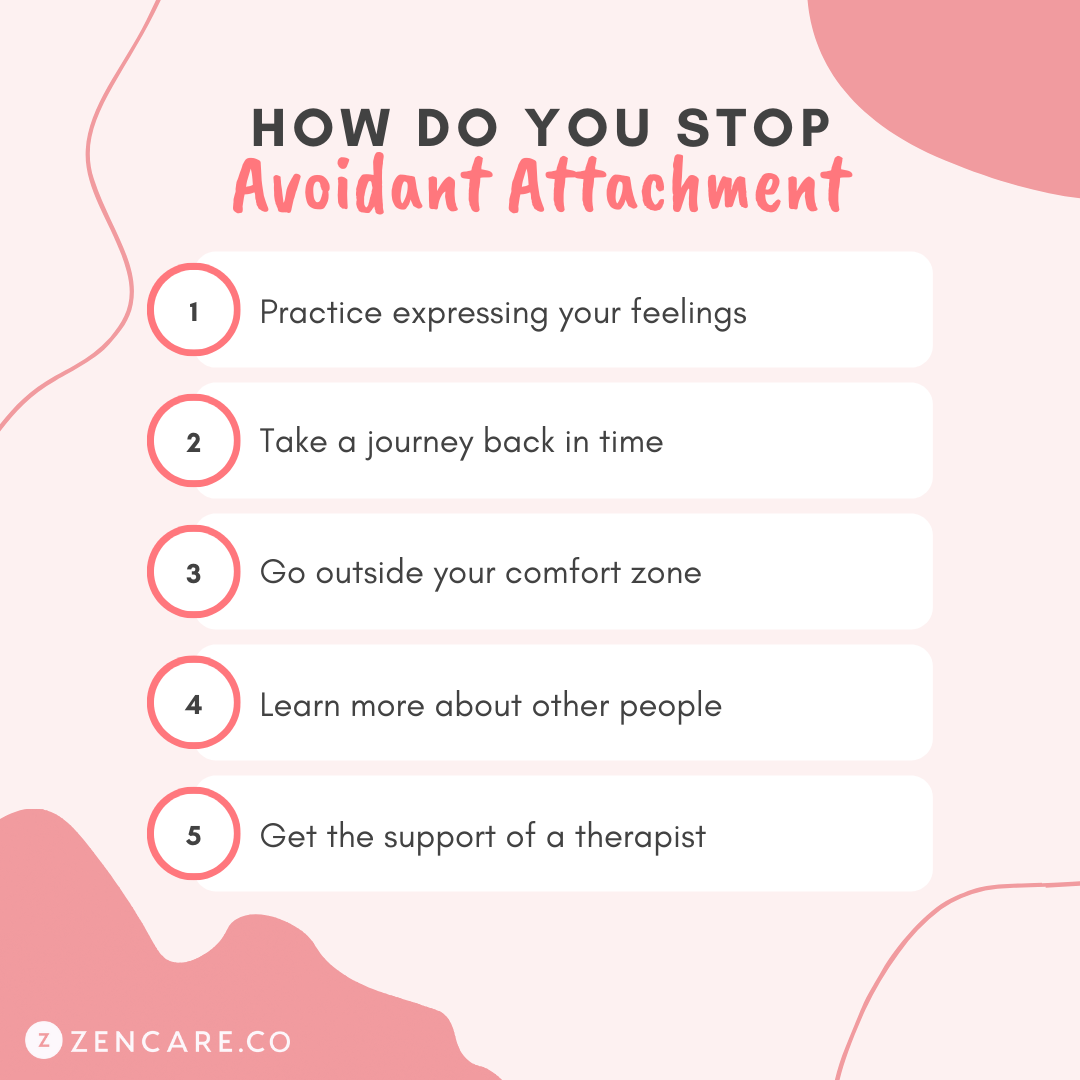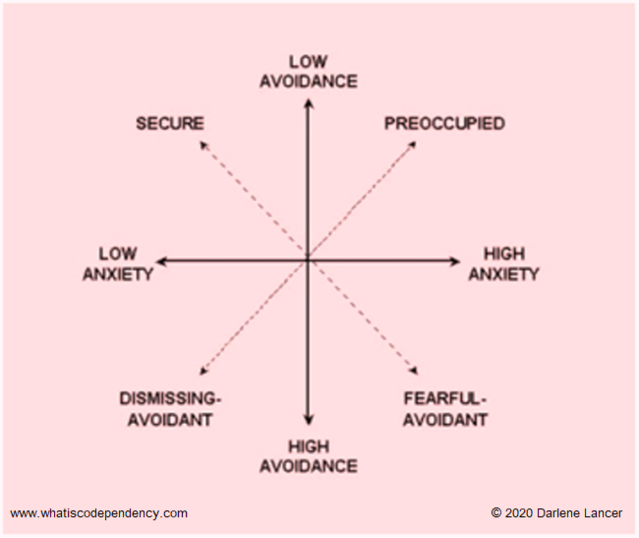Introduction
The concept of attachment style, first proposed by John Bowlby, pertains to the enduring emotional bonds individuals form with others. These patterns are shaped in early childhood and significantly influence our relationships throughout life. Avoidant attachment, characterized by emotional withdrawal and a desire for distance, can hinder intimate connections and create obstacles in personal growth. By understanding the root causes and dynamics of avoidant attachment, we can embark on a journey towards healing and building secure, fulfilling relationships.

Image: blog.zencare.co
Defining Avoidant Attachment
Avoidant attachment stems from childhood experiences where a primary caregiver was emotionally unavailable or inconsistent. As a result, individuals develop defense mechanisms to protect themselves from potential rejection or abandonment. They internalize the belief that closeness with others could lead to pain and subsequently suppress their emotional needs.
Characteristics of Avoidant Attachment
Individuals with an avoidant attachment style often exhibit the following traits:
- Emotional Distance: They maintain a physical and emotional distance from others, often avoiding intimacy or close relationships.
- Low Self-Worth: They struggle with feelings of inadequacy and self-doubt, believing that they are not worthy of love or connection.
- Fear of Abandonment: They are hypersensitive to signs of rejection, causing them to withdraw and become distant.
- Difficulty Expressing Emotions: They suppress their emotions, especially those related to vulnerability or neediness.
- Independence: They over-emphasize self-sufficiency and pride themselves on not relying on others.
Causes of Avoidant Attachment
The development of avoidant attachment is primarily attributed to inconsistent or emotionally neglectful parenting during childhood. When a child’s needs for love, security, and responsiveness are not met consistently, they may develop an avoidant attachment style as a coping mechanism.

Image: signalduo.com
Effects of Avoidant Attachment on Relationships
Avoidant attachment can have a profound impact on romantic relationships. Individuals with this attachment style may find it difficult to:
- Trust: Trusting others and opening up emotionally can be a challenge for those with avoidant attachment.
- Intimacy: Establishing deep and meaningful connections can be difficult due to fear of closeness.
- Emotional Vulnerability: Expressing emotions and allowing for closeness can trigger feelings of discomfort or anxiety.
- Conflict Resolution: Dealing with conflicts and expressing needs openly can be inhibited by fear of abandonment or rejection.
The Journey to Secure Attachment
Healing avoidant attachment is a gradual and ongoing process that requires self-discovery, self-compassion, and a willingness to learn. The following steps can guide the journey towards secure attachment:
- Self-Awareness: Recognizing patterns and understanding the origins of avoidant attachment is crucial.
- Cognitive Restructuring: Challenging negative thoughts and internalized beliefs that hinder healthy relationships.
- Emotional Regulation: Learning to identify and express emotions effectively without resorting to avoidance or suppression.
- Self-Care: Prioritizing self-love, setting boundaries, and engaging in activities that promote well-being.
- Therapy: Seeking professional guidance from a therapist can provide a safe space for exploration, healing, and growth.
How To Fix Avoidant Attachment Style
Conclusion
Navigating the challenges of avoidant attachment requires courage and self-compassion. Understanding the root causes and characteristics of this attachment style empowers individuals to embark on the transformative path towards secure and fulfilling connections. By adopting a holistic approach, incorporating self-care, therapy, and a willingness to grow, individuals can overcome the obstacles posed by avoidant attachment and cultivate a life characterized by healthy, enriching relationships.







